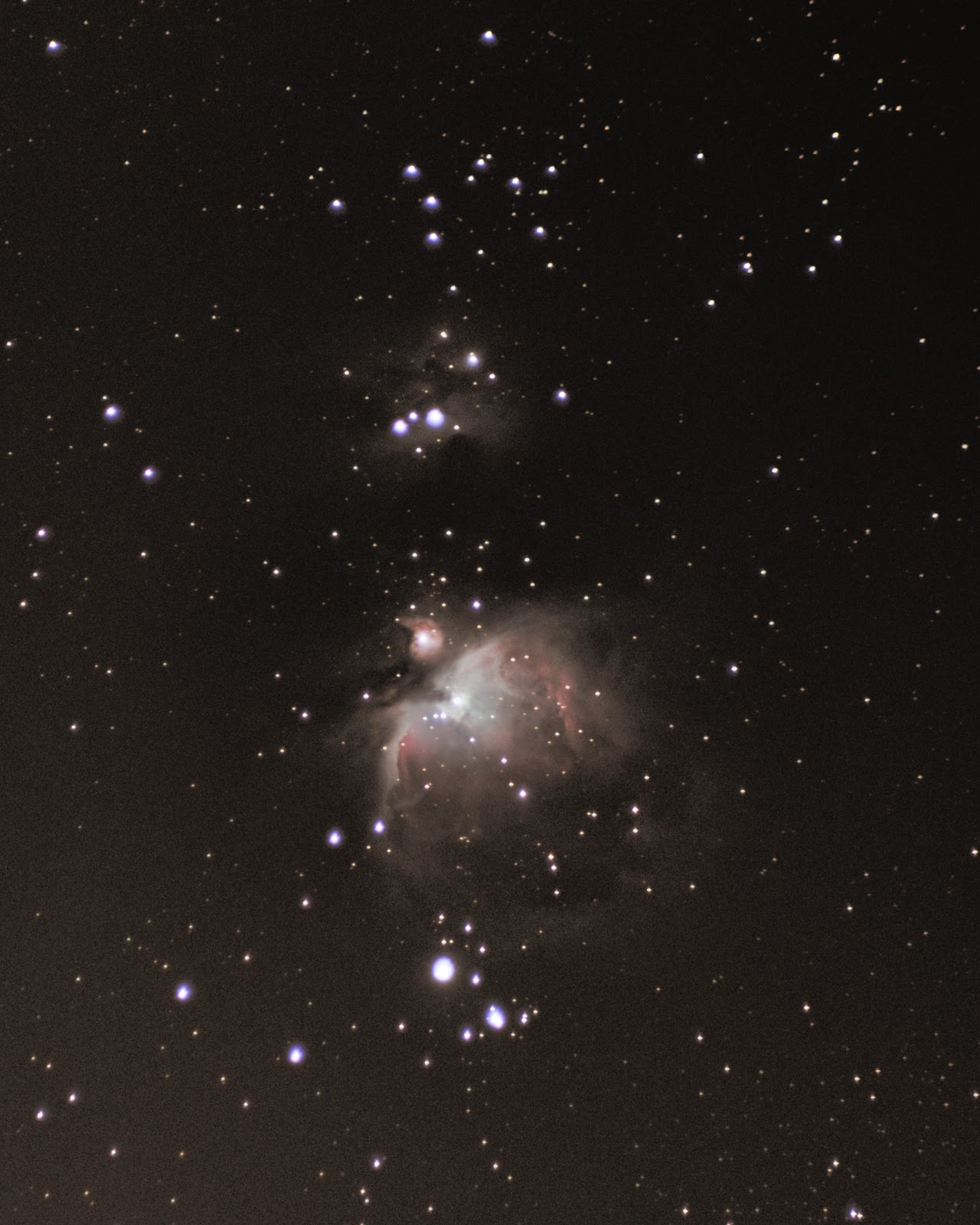I've been making incremental improvements over the past 2 years, but this was my first time imaging the Orion Nebula (M42) with my motor driven
equatorial mount. I did a quick alignment (still trying to figure that out) but was able to get up to about 13 second exposures without star trails. Here is the resulting image:
 |
| Canon T5i on EQ1 mount stacked in DSS, 159 subs, 28 darks, 25 bias, 20 flats, ISO 1600, f/5.6, 300mm, 13 sec, total exposure time about 27 minutes |
I did most of my curves in DSS, even though I hear doing curves in Photoshop is a lot better. I just can't get it, but I keep trying. I used Photoshop for a bit of contrast and saturation. I was so pleased with the original color that remained even after stacking in DSS.
 |
| It feels amazing to look back on my improvement over the years - I remember being excited about each of these images at one point and now they seem so basic! |
I have a lot to learn in processing, but I did make some major progress using flats at my EQ mount for the first time on Orion. Yes that's right! Flat frames! I found
this article by BudgetAstro to be the most helpful, because I didn't realize the goal of flat frames is to get the histogram in the middle - unlike dark frames where you just slap the lens cap on and use the exact same settings. I tried using flats before but just used the same settings like dark frames and massively over-exposed my flats, which is pretty pointless because then no gradient or vignette remains.
 |
| Me taking flat frames in my family room, trying to get the histogram just barely to the left of center. Adjusted exposure time and kept f-number, focus, and ISO the same as my light frames. |
 |
| Tried to get the screen as close to the lens as possible, and moved it around slightly while snapping frames to try to get even lighting |
I had
massive hot spots in the center of my deep sky images last time, and with the flats this time I didn't have that issue with vignettes. Not saying I had a perfectly gradient-free field, but it was way better than a right gray hot spot.
More gray November skies in the forecast, maybe I'll get some more time to practice my Photoshop curves - but either way I'm extremely proud of my big leap forward in M42!
 |
| A rather blurry shot of my setup, Canon T5i on Orion EQ-1 mount |





No comments:
Post a Comment